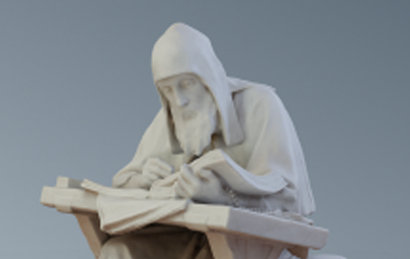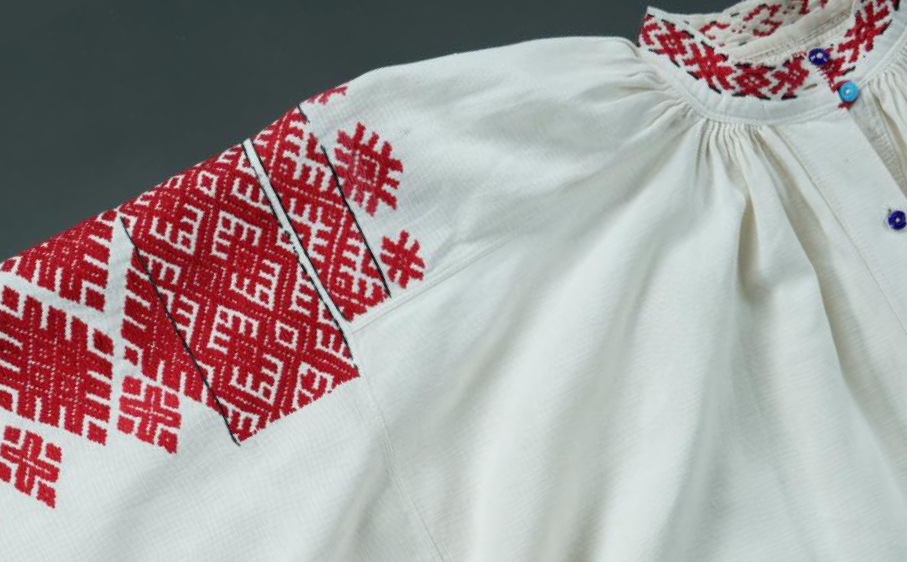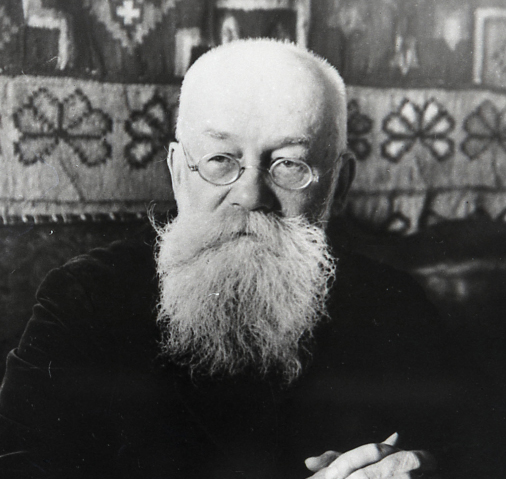The art collection of Bohdan and Varvara Khanenko, donated by their will in 1918 to the All-Ukrainian Academy of Sciences, suffered significant losses during the Soviet period. In the 1920s and 1930s, as part of the Soviet government's "economic" project, aquamaniles, a silver bowl, and paintings by world-renowned artists were confiscated. We will provide more details about them.
Read moreHideAquamanile, 1206.
A unique monument of Iranian medieval art, the Shirvan Aquamanile from 1206, was part of the Khanenko art collection of Islamic art. It was donated to the All-Ukrainian Academy of Sciences in the early 1920s and was one of the best collections in the Soviet Union, drawing the attention of connoisseurs. The Khanenko aquamanile was thoroughly studied.
In May 1928, the State Trade Commission began selecting items from the museum that could be sold abroad "without harm to the museums." The masterpiece was valued at 3,000 kopecks and was earmarked for sale. The museum's appeals to all authorities to protect its treasures were unsuccessful.
It was later discovered by chance that the aquamanile had been purchased in 1932 by the Oriental Department of the Hermitage for its exhibition. Since then, Russian museum professionals have exhibited this masterpiece from the Ukrainian collection as part of their own holdings.


Silver Bowl with Ibexes from the Sasanian Era
The gilded silver bowl from the Sasanian era was well-known to experts in Eastern art during Bohdan Khanenko's lifetime.
The owner himself first publicized information about the artifact in 1901, and in 1928, the State Trade Commission included it on the lists of items to be exported, valuing it at 10,000 kopecks. Since then, the artifact became a subject of the museum's struggle and even remained in the Ukrainian capital for a while.
However, in 1935, it was transferred to Leningrad at the request of the organizing committee of the 3rd International Congress of Iranian Art and Archaeology for a major exhibition, and it was never returned to Kyiv. Was it stolen or "borrowed"?
Fate of Pictorial Masterpieces from the Khanenko Collection
Pictorial masterpieces from the Khanenko collection were also prepared for sale abroad by the State Trade Commission, and the remnants were appropriated by the State Hermitage Museum. Thus, the diptych "Adam and Eve" by the German Renaissance artist and printmaker Lucas Cranach the Elder was sold to Berlin in May 1931 with a deliberately false Stroganov provenance label and is currently held at the Norton Simon Museum in Pasadena, California, USA.
Jacob Backer's "Courtesan" from the Netherlands ended up in the National Museum of Portugal in Lisbon, and François Boucher's "Landscape in the Vicinity of Beauvais" is in the Hermitage's collections. Archival photographs of the Khanenko museum collection with the removed artworks document their affiliation with the Khanenko collection.
Conclusions
The theft of the masterpieces of the Khanenko collection testifies to the persistence of the colonial policy, equally inherent in the Russian Empire and the Soviet Empire - the USSR, and the lack of standards of decency in Russian culture. The tragic fate of Ukrainian museum collections is repeated with the beginning of Russia's hybrid war against Ukraine and Russia's large-scale invasion. Stolen artifacts require careful recording, mandatory return and prosecution of the culprits.
Visit the Khanenko Museum
St. Tereshchenkovska, 15-17
up to 120 UAH
from 10:30 to 17:30
(weekend: Monday, Tuesday)







